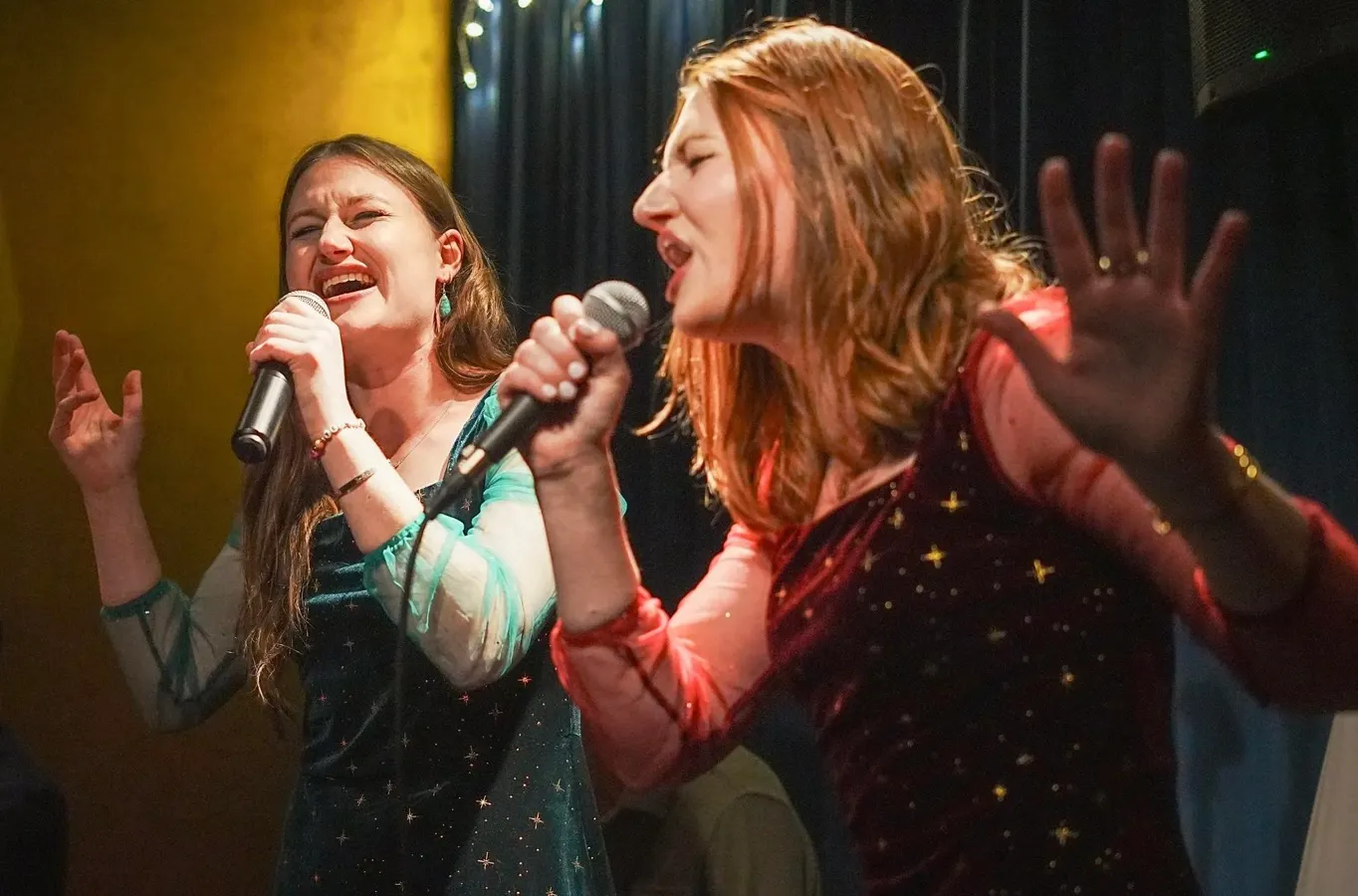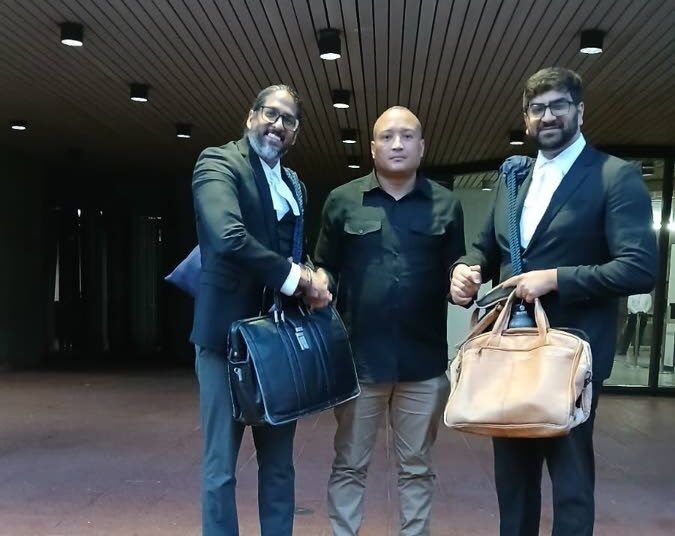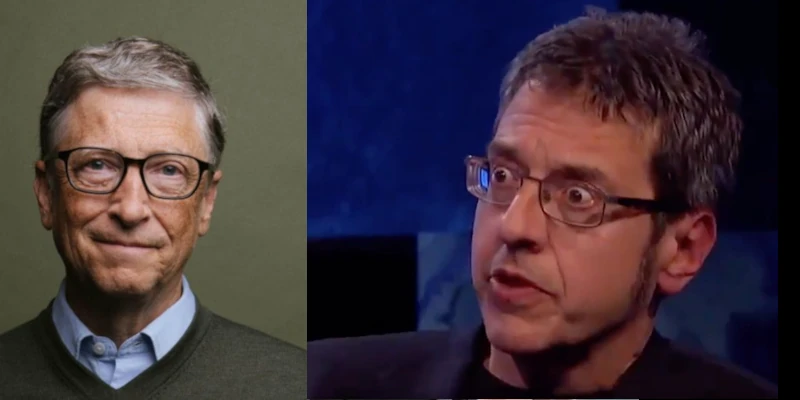Copyright Forbes

When Taylor and Hayley Emerson left their federal appointments in the Biden-Harris Administration, they translated their experience in public service into performance, using art to champion the institutions they once represented. The identical twins, both musicians and cultural diplomats, are channeling what they learned in government into a creative mission to strengthen civic engagement and defend democracy through storytelling. Their latest project, #EDMatters: Why We Have a U.S. Department of Education – 46 Years Later, is a love letter, a protest, and a call to action. The music video celebrates the Department’s founding under President Jimmy Carter in 1979 and the nearly five decades of work ensuring that every student, including those with disabilities, has access to a quality education. But in 2025, as federal agencies face existential threats from those seeking to dismantle them under the Project 2025 agenda, this “unofficial theme song” for the Department of Education has become a cultural act of resistance. From “Twinterviewers” To Cultural Diplomats “The Emerson Twins” began in 2005, when they were “Twinterviewers” on Jimmy Kimmel Live! They are from Los Angeles and grew up as theatre kids, but since they were born into a family of public servants, they have always been drawn to purpose-driven creativity. Two decades later, they are writing and performing unifying songs across LA, New York, Berlin, and Beijing; directing and producing their own shows; creating social-impact music videos; and managing cultural diplomacy and climate initiatives inside the U.S. government. "The highlight of our lives was performing for Secretary Hillary Clinton!" says the Emerson Twins. After leaving their appointments in the Biden-Harris Administration, Taylor at the U.S. Departments of State and Education, and Hayley at the Department of Energy, the sisters co-founded The Emerson Twins, a storytelling platform that uses music, theatre, and strategic media to bridge political and cultural divides and spark positive change in communities across the United States and around the world. Over the next few months, Taylor co-produced the seven-time Tony-nominated play John Proctor Is the Villain, a New York Times Critics’ Pick hailed by Variety as “the best play of the season,” now in feature development at Universal Pictures with Marc Platt and Tina Fey. She later moved to London to work as a Creative Executive with Blue Spruce Productions while pursuing her master’s degree at the London School of Economics and Political Science in Media and Communications. Through her studies, she’s exploring how cultural storytelling across film, theatre, music, and sports can help society speak truth to power. Meanwhile, Hayley leads TradesForce, a national campaign to recruit one million people into high-paying skilled trades careers in the clean economy, an effort that merges large-scale events, digital campaigns, and music-industry partnerships to bring pride and opportunity back to the trades. Together, the twins have made “purposeful performance” their shared mantra. From producing Goodbye for Now, a D.C. musical raising funds for immigrant families, to co-hosting the civic vodcast Twinterviews: Let’s Try This Again!, they’ve spent their careers fusing art with advocacy. But #EDMatters may be their most urgent and defining project yet. A Song Born Inside The Department “I was inspired to write the song on my first day at the Department on February 28, 2022,” Taylor recalls. “At the end of orientation, a career public servant spoke about the importance of music education and joked that maybe one day there’d be a Department of Education musical. My ears perked up! As a musical theater composer from L.A. who somehow ended up working for the President in D.C., I thought, maybe I can be useful here.” That offhand comment became destiny. She began writing what became the Department’s unofficial theme song. “Fast forward to October 18, 2023, my last day at the Department, and coincidentally, the day after U.S. ED’s birthday! I shared the song at a small goodbye gathering in the Secretary’s conference room. What I thought was the theme song, I realized was really a love letter to the Department, the mission, and the people who had come to feel like family.” A year later, Project 2025’s threats to the Department gave that song a new purpose. “We watched the Department get chipped away and stood at walkouts as long-serving colleagues were forced to leave their jobs they’d been at for years, some 40+. We decided the song had a different fate,” Taylor says. She join forces with music producer Ian Roegels and cinematographer Paul Wood to direct the #EDMatters music video, pitched to Dr. Chauncey Alexander and the Department’s #EDMatters team. “With support from Shital C. Shah, LaWanda Toney, and Dorie Turner, we hit the ground running.” The project officially launched with Dr. Jill Biden sharing it publicly. Inclusion As A Creative Compass “Inclusion guided every creative choice,” Taylor explains. “We pulled historical photos and footage across administrations from the Carter years, when the Department was founded, through Reagan, George H. W. Bush, Clinton, George W. Bush, Obama, Trump, and Biden to trace how the Department helped shape U.S. education. You can’t tell one administration from another in the chorus, just the people who make up American education.” The video’s lead vocalist, Allison Burrell, a government contractor and musician with a physical disability, anchors the song’s emotional core. “Being front and center was so important to me,” Burrell says. “It shows students with disabilities their stories shouldn’t be on the sidelines; they belong front and center.” Subtle details across the video pay homage to the Department’s history, a “Carter” name tag, a stack of banned books beneath Hamilton: The Revolution, and a whiteboard reading “Department of Education 101,” the same title as Taylor’s first-day orientation. “Even the song itself is an Easter egg,” she notes. “The finale includes RIFed staff, public servants with disabilities, trans-rights lawyers, student-loan borrowers, etc. That is the real spirit and substance of U.S. ED’s purpose and what this video hopes to capture.” The Human Stakes Behind Federal Policy The twins wanted the project to connect emotion with impact, so they invited two women deeply familiar with the Department’s work to lend their voices, Katy Neas, CEO of The Arc of the United States and former Acting Assistant Secretary for the Office of Special Education and Rehabilitative Services (OSERS), and Hannah Zack, a Disabled law student and former Special Assistant in the Department’s Office for Civil Rights (OCR). Neas explains what’s at risk if the Department weakens, “Just 50 years ago, children with disabilities were undereducated, if they received any education at all. That’s why the federal Individuals with Disabilities Education Act exists. It was because of this federal law and its partnership with states that 7.5 million children with disabilities have had the opportunity to learn and create better futures. The Department plays at least two essential roles, monitoring states so they ensure that schools follow the law and enforcing the law by investigating complaints filed with the Office for Civil Rights. Without robust implementation of these essential roles, mistakes will be made and children’s educational rights and opportunities will suffer.” She adds, “Nearly every state reports a shortage in special education teachers. The Department of Education makes crucial investments in training new teachers and preparing higher education faculty to train new teachers. Without this, students will spend their days in classrooms with educators who do not have the know-how to meet their needs and help them succeed.” For Zack, the work is personal. “I grew up as a 504 student and never understood that there was an entire team of people working behind the scenes to ensure students like me had access to an equitable education,” she says. “It wasn’t until I joined OCR myself that I understood the scope of your work… You’re not just enforcing the law; you’re changing lives.” During her tenure, one major investigation resulted in over 66,000 Disabled students receiving compensatory services they were denied during the pandemic. “This was a tangible reminder of what justice can look like when government works as it should.” Zack continues, “To policymakers who view disability rights and education as separate issues, I respectfully say, you are wrong. Disabled people make up at least 20% of this country’s population, and we are not going anywhere. … When disabled students are left behind, it is not just a policy oversight; it’s a moral failure.” Public Servants As Unsung Heroes For the Emersons, the song is also about the people behind the scenes who make the system work. “To our federal employees, to our security officers, the mailroom team, and facilities staff, to the White House Initiatives teams, to the people in every one of the 18 offices at ED, You’re movers and shakers and visionary makers. America fights for you!’” Hayley says. “We see you, we hear you, and we’re standing with you.” Katy Neas echoes that tribute. “The staff at OSERS are some of the most talented, dedicated, and competent individuals I have known over my long career. They work extremely hard to ensure that IDEA is understood and implemented well. Our nation owes them a great deal of gratitude and their absence will be deeply felt by this generation of students.” When Policy Meets Pop Culture The #EDMatters song captures what so many forget, policy is personal. Its chorus distills the Department’s mission into something that’s both catchy and profound, “We’re the Department of Education. It’s our mission to serve this nation (also, we’ve built a strong foundation) and make a stand for our children of this world.” Neas adds, “It may sound corny to say that children are our future, but they are. … They must be educated so that they can develop the critical thinking skills to navigate today’s challenges.” The Civil Rights Connection The roots of disability rights are inseparable from education, Neas reminds us. “Parents associated with The Arc of Pennsylvania sued their state in 1971 and won the right for their children to receive a free, appropriate public education. So many were adamant that their disabled children should be educated because they wanted the same experiences for them as their children who did not have disabilities, to live at home as part of a family, to go to school and get an education, and to live with independence as an adult. You can’t get to independence as an adult without access to a quality education.” A Creative Blueprint For Civic Engagement The Emersons hope the video mobilizes people to take action. Their asks include: “Run for local office. Show up and engage your school board about the importance of ED’s role.” “Use your voice online. Share stories of why and how federal funds impact kids in your community.” “Advocate at the state level. Call/write your legislators to protect ED funding and press for sustained support.” They credit education leader Amy Loyd with helping shape these steps. “We’ve seen that when people speak up, especially in a positive, unified way, leaders do listen,” Taylor says. “So use your voice! The risk is too high to just watch from the sidelines.” Art As A Bridge Between Generations In a polarized era, the Emersons see art as a tool for connection. “We’re not here to fight each other; we’re here to learn from one another and make something better for everyone’s kids,” Hayley says. Zack agrees, “Behind every policy debate are real students. When we connect those stories to art, we keep people engaged and we remind them that progress depends on participation.” A Love Letter, A Protest, A Promise For the Emerson Twins, #EDMatters is as much about the future as it is about history. “Public education has always been a labor of love passed from one generation to the next,” Hayley says. “We hope this project helps light a spark in those who will lead the charge in the future.” “We’re the Department of Education. It’s our mission to serve this nation.” A lyric, yes, and a reminder that behind every law, policy, and classroom are people fighting for the future of our children, and of our country.



